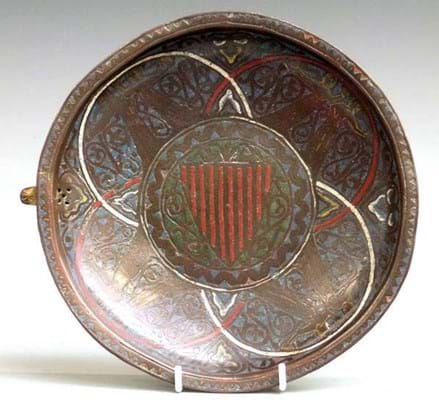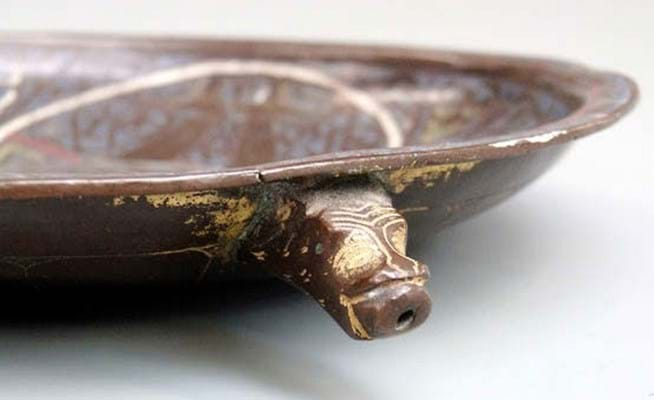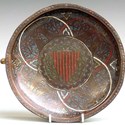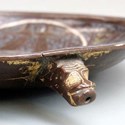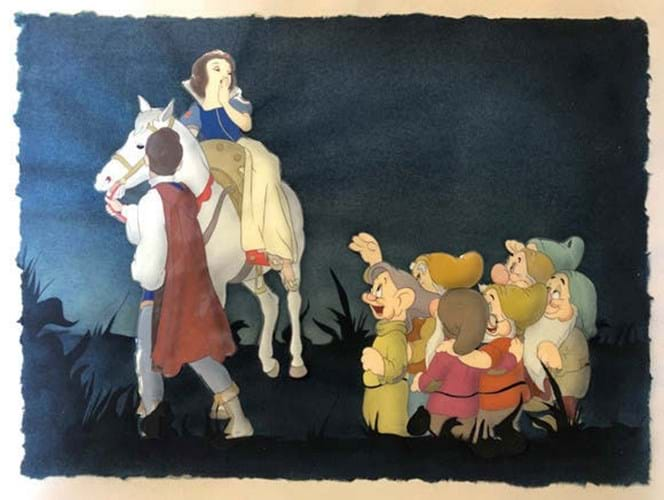
1. A gold armorial ring
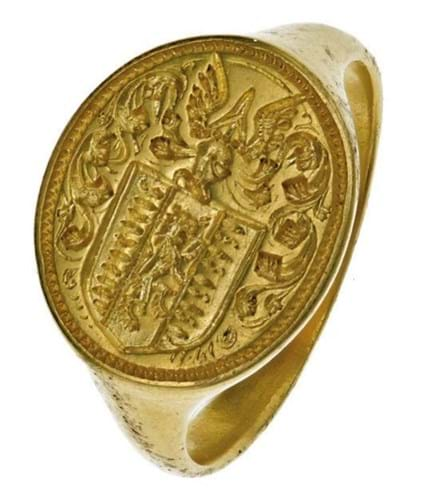
A gold armorial ring thought to date from 1640-80 discovered by a metal-detectorist on the shores of Loch Lomond in Scotland - estimated at £8000-12,000 at Dix Noonan Webb.
A gold armorial ring discovered by a metal-detectorist on the shores of Loch Lomond in Scotland last year will be offered in the Dix Noonan Webb auction on September 10.
The finder declared the ring as Scottish Treasure Trove to the National Museum of Scotland but was told this June that the museum did not want to purchase it. She consigned it to the Mayfair auction house.
DNW’s further research revealed that the crest belonged to the Colman family of Brent Eleigh, Suffolk. The family used the coat of arms depicted on the bezel of the ring from 1598. This ring itself is thought to date from 1640-80 and it is estimated at £8000-12,000.
View the lot online via thesaleroom.com.
2. A studio glass vase
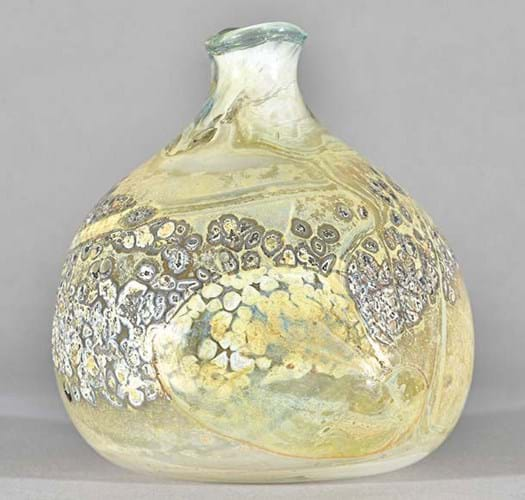
This vase by Sam Herman, dated 1971, is estimated at £200-300 in Bellmans’ September 10-12 Interiors auction.
This vase by Sam Herman (b.1936), founding father of the studio glass movement, is dated 1971. It was given to the present owner by Herman when he was a lecturer at the Royal College of Art.
The 7½in (19cm) high vase is estimated at £200-300 in Bellmans’ September 10-12 Interiors auction in Wisborough Green, West Sussex.
View the lot online via thesaleroom.com.
3. A Snow White animation
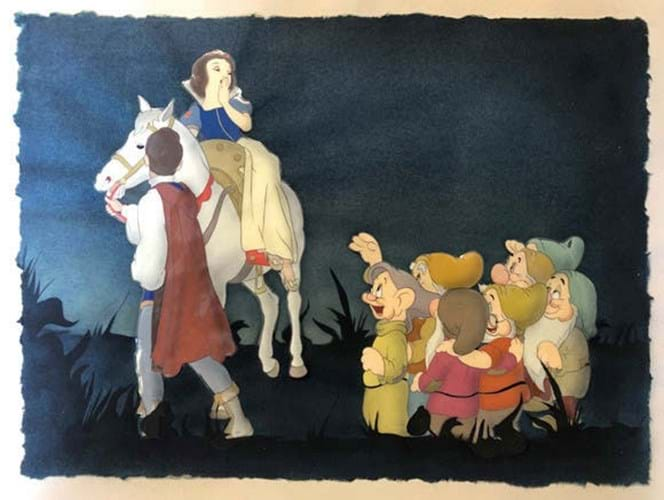
This original Walt Disney cel from the 1937 animated film Snow White & The Seven Dwarfs is estimated at £5000-7000 in the at Andrew Smith & Son auction on September 10.
This original Walt Disney cel from the 1937 animated film Snow White & The Seven Dwarfs includes two separate hand-coloured celluloids showing the dwarfs clustered waving goodbye to Snow White as she is led away by Prince Charming on his grey stallion.
The 10 x 13½in (25 x 34cm) sheets, laid on airbrushed and hand-coloured background, come to auction at Andrew Smith & Son in Winchester on September 10 from the estate of the actress Peggy Cummins (1925-2017). They were gifted to her when she was appearing in the London revue Let’s Pretend in 1938, aged 13. It is estimated £5000-7000.
View the lot online via thesaleroom.com.
4. A mid-18th century bureau cabinet
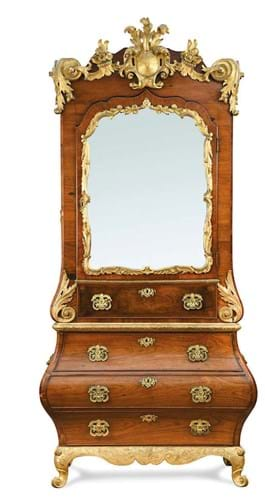
This north German mid-18th century padouk and parcel gilt bombe mirrored bureau cabinet is estimated at £15,000-25,000 in the Cheffins auction on September 11-12.
Contents that once adorned one of Britain’s finest privately owned country houses will be sold at Cheffins in Cambridge on September 11-12.
More than 200 lots from the Grade I-listed Mawley Hall will be included in the sale. The Shropshire mansion was built on family lands in the 1730s for industrialist Sir Edward Blount and has changed hands only twice – in 1962 and most recently in September 2018 when the guide price was set at £10m.
The high-quality consignment – described by Luke Macdonald, director at Cheffins, as “one of our flagship sales of the year” – includes paintings, furniture, Chinese ceramics, decorative items and carpets.
This north German mid-18th century padouk and parcel gilt bombe mirrored bureau cabinet is the top-estimated lot at £15,000-25,000. Standing an imposing 9ft (2.71m) high, it is characteristic of the work of Altona cabinet-makers favoured by the north German and Danish aristocracy.
View the lot online via thesaleroom.com.
5. Four 13th century French enamel bowls
Four medieval gemellions will be sold at Stroud Auctions on September 11-13, each with a guide price of £2000-4000. These 13th century French copper and champlevé enamel bowls, almost certainly from Limoges, were used as part of the ceremonial washing of hands at the medieval dinner table.
The name comes from the Latin word gemellio meaning twin, and the bowls were used in pairs – one having a small spout from which water would be poured (such as that pictured), with the second used as the receptacle. Each 9in (23cm) bowl has contrasting decoration, including heraldic shields, hunting scenes and dancing women.
The local vendor was unaware what the items were although they had been in the family for many years.
View the lots online via thesaleroom.com.


